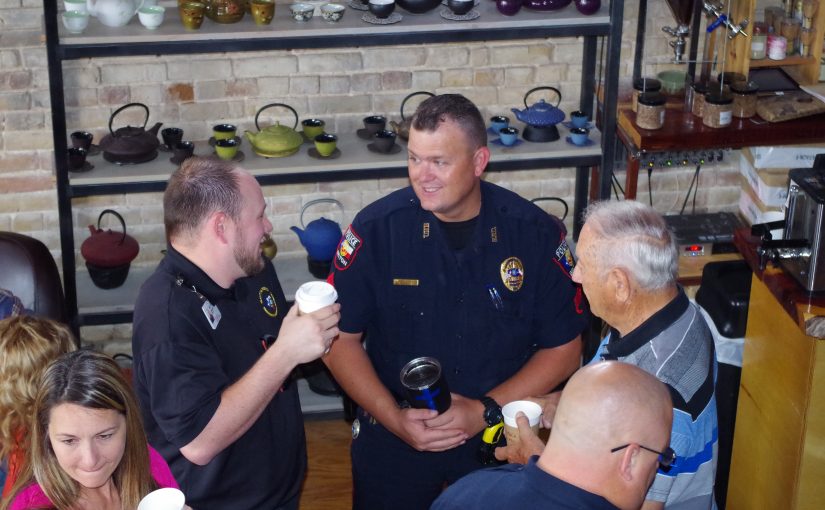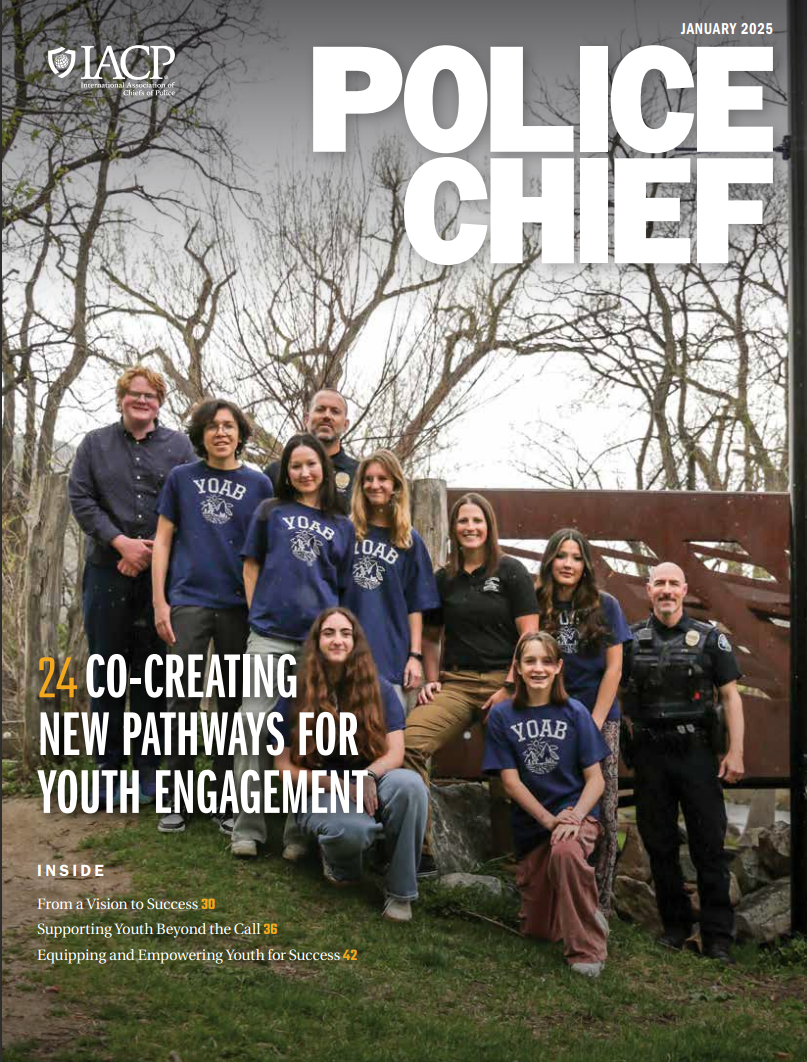Twenty-first century policing is colliding with 19th century policing. Sir Robert Peel’s Nine Principles of Policing called out prevention as the foundation of law enforcement in 1829. Since then, policing has moved through various models, including the current community-oriented policing model adopted in the mid-1980s. However, many agencies have said they were employing community policing, but, in reality, they do not understand what true community policing is. It is not a program or a dedicated person or division called the community policing officer or community policing division—community policing is an organizational philosophy that must be embraced from the top-down and the bottom-up. It is a true understanding that the police cannot do it alone and must build partnerships with the community to solve community problems. Crime is a community problem, not just a police problem. The solution to crime is rooted in crime prevention and the prevention of problems conducive to criminal behavior. Many of the law enforcement agencies who practice community policing miss the key foundation of prevention. The end goal of prevention and community policing is an improved quality of life for the community. This means the end goal for all law enforcement agencies should be improving the quality of life for those who live in, visit, or own a business in their communities. Public trust can be improved or restored and crime reduced through this collaborative approach to policing. The following are seven steps to building public trust in policing using a prevention-focused policing model:
1. Make prevention the focus of police operations.
2. Foster a servant-guardian mentality in officers.
3. Make quality of life the end game.
4. Embrace smart policing initiatives.
5. Develop law enforcement staff.
6. Adopt “best practices” in policing.
7. Promote an officer safety mind-set.
Policing by consent is a basic premise of U.S. law enforcement. Those in the law enforcement profession sometimes forget that their powers come from the public, but, ass Peel stated, “the police are the public and the public is the police.”1
Police officers in some countries are branches of the federal government and function as military units; however, U.S. law enforcement are members of the community who freely pursue a profession vested in the protect and serve motto. Consent comes from the community as a whole, not from a single citizen. An individual cannot turn away from the law or determine that the police no longer have consent to provide service. However, the community can determine what the laws are (within the confines of state constitutions and the U.S. Constitution) and how they want to be policed. If the police treat community members unfairly, are overbearing, or enforce laws outside of their charge, the community can make changes. Oftentimes, this is done at the local ballot box, but, recently, it has come in the form of public protests.
Prevention-focused community policing is a modern organizational philosophy with the primary goal of working cooperatively with citizens to identify and resolve issues that can affect the quality of life in their neighborhoods through a prevention-based approach. The primary management of police resources is geographical. Officers that are assigned to defined smaller geographical areas often feel a sense of ownership for that area. Officers commonly know many of the people who live and work in the area and are intimately familiar with the area’s geography, businesses, schools, and churches. Officers will often seek out detailed information about police incidents that have occurred in their area of responsibility during their off-duty time, and they become resources to community members for other city services.
Guardian or Warrior
Some suggest U.S. law enforcement has become over-militarized. This perception can be attributed to television depictions of police SWAT operations and drug raids and the acquisition of some military equipment by local police departments. This portrayal does create a warrior mentality in the minds of some, and, unfortunately, this can lead to friction in neighborhoods where the police are called to serve in this role more often than others.
Despite this perception, the protect and serve motto would suggest a guardian mind-set with customer service as a foundation. Law enforcement agencies embracing a servant leadership philosophy have been successful in building the mind-set of their officers to be servant-guardians, an approach that can greatly enhance public trust by instilling service above self and the protection of others as a mission. This means the guardian can still step into the role of a warrior, but only when protecting those they serve. Retired Lieutenant Colonel Dave Grossman refers to this mind-set as that of a sheepdog protecting the sheep from the wolves who try to come in and harm them.2
If the police truly understand their role in the vitality of their community, they will become true stakeholders and develop the sense of ownership needed to make a difference. This is why quality of life must be the end game and ultimate goal for local law enforcement. When citizens feel safe where they live, work, and play, they put more value in their local police department. Businesses and people move to communities that have a great quality of life. Economic vitality equals jobs, and jobs reduce poverty-related issues.
Social Media and Public Trust
Smart policing initiatives embrace technology to prevent and solve crime. Intelligence-led policing uses technology to disrupt criminal activity or prevent it from ever occurring through a focus on intelligence gathering.
Technology can build public trust and destroy it as we have seen with some sensationalized videos that have gone viral on social media. Technology has allowed police to tell their side of the story using mediums like social media; it has also led to the phenomena of “citizen journalists” who film citizen-police interactions. Some of these interactions do not always appear appropriate, and some are outright unlawful or unethical actions by a small fraction of officers. Some of these videos did not portray the entire incident and many times the officer’s actions were justified; however, the handful of incidents where the officer was clearly wrong damages the entire law enforcement profession. Media coverage based on emotions, rather than facts, can erode public trust even in communities far away from where such an incident occurred (e.g., Ferguson, Missouri, and Baltimore, Maryland). In reality, less than 2 percent of all police encounters end up in any use of force.3
Despite the high-profile uses of force in the past few years, a recent Gallup poll shows the majority of people, including communities of color do trust the police.4
Recruitment and Training
A key component of maintaining community trust is ensuring that those who would do harm never get into the law enforcement profession, or if already in the profession, are removed. Hiring the right people using comprehensive background investigations is imperative, and once the right people are hired, they must be developed. Continual training is an essential component of developing a professional police officer. This training must include de-escalation techniques to reduce the number of use-of-force incidents. The pillars of procedural justice must be part of police staff development training so that transparency, fairness, voice (allowing the public to share its side of the story), and impartiality are second nature.5 This alone will foster public trust and prevent crime.
A professional police agency must also rely on a standard or benchmark to determine best practices and policies for how they provide police services to their community. National- and state-level accreditation programs for law enforcement have become a popular way to determine what the best practices are. One such program is the Texas Police Chiefs Best Practices Recognition Program.6
Recognized agencies in this program must meet 166 standards that have been determined to be the best practices for professional law enforcement in Texas. These best practices include policy standards and requirements for everything from use of force to evidence collection. Such recognition validates that a community’s police agency is doing business the correct way as verified by outsiders who regularly assess the agency. Accreditation programs can also reduce civil liability claims.
Modern law enforcement agencies are adopting a customer service–driven model of policing that embraces the prevention goal laid as the foundation of the profession in the early 1800s by Sir Robert Peel. If law enforcement executives truly make prevention the key focus of all police operations, they are putting their customers—community members—first, and the agencies will seek community members’ input (voice) as part of the solution. Effective police departments embrace technology, develop their staff, follow best practices for the profession, and understand when to employ de-escalation techniques. The ultimate goal for any law enforcement agency must be to improve the quality of life in its community for those who live, work, and play there. A prevention-focused model of community policing can strengthen trust between the community and the police that serve it.
Public Perception of Law Enforcement
A survey was sent out by the author to several hundred people in Central Texas to gauge public views of law enforcement and expectations on how police services should be delivered. The survey had a 75 percent response rate. Questions focused on the following areas: social media; how the public receives their news; trust of the police; trust of the news media; what the goal of the police should be; community-police partnerships; transparency; and the role of the police.
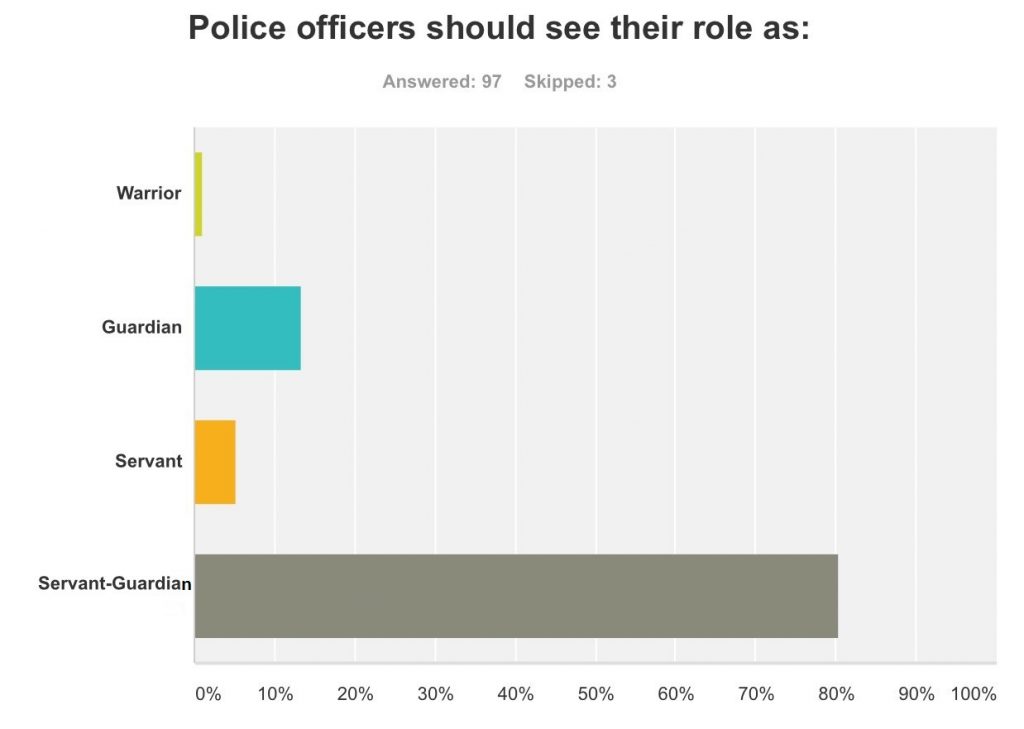 All respondents (100 percent) indicated it is important for the police to build partnerships with the community to prevent crime.This important component of community policing is not understood by all law enforcement executives, but the survey results demonstrate that it is understood by the community. Nearly 93 percent of those surveyed believe police should be problem-solvers who proactively seek out ways to prevent crime and improve public safety by forging strong partnerships with the community. More than 90 percent also believe police officers should be “problem-finders.”
All respondents (100 percent) indicated it is important for the police to build partnerships with the community to prevent crime.This important component of community policing is not understood by all law enforcement executives, but the survey results demonstrate that it is understood by the community. Nearly 93 percent of those surveyed believe police should be problem-solvers who proactively seek out ways to prevent crime and improve public safety by forging strong partnerships with the community. More than 90 percent also believe police officers should be “problem-finders.”
When given options to choose from what the “end goal” should be for the police, the highest rated choice was improving the quality of life in the community (selected by nearly 84 percent of respondents). When asked if the police should see their role as warriors, guardians, servants, or servant-guardians, over 80 percent said the police should be servant-guardians.
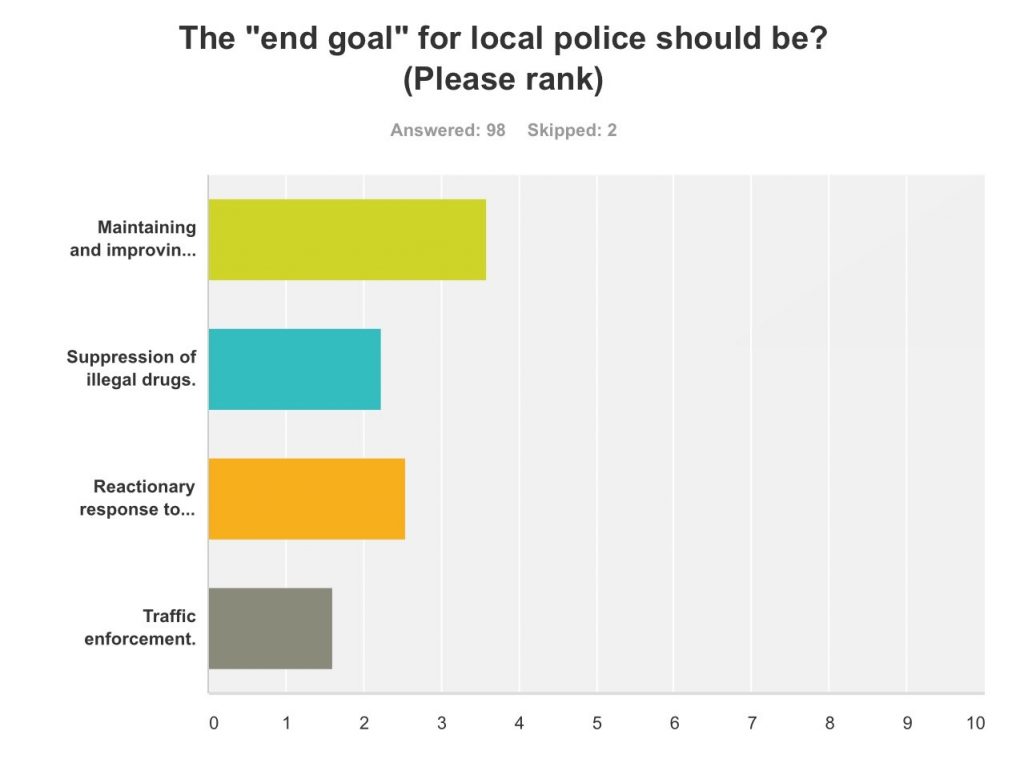
Respondents were asked to rank the following things they believe improves police transparency: body cameras, local police sharing information on social media, what the local media says about police, police outreach programs, and officers building relationships with community members. Forty-three percent ranked officers building relationships with community members as the number one choice for improving police transparency. The second highest rated choice for improving transparency was community outreach programs like Coffee with a Cop, National Night Out, and citizen police academies. Police departments sharing information on social media was ranked third. Despite the intense media coverage of body cameras, they were ranked fourth. Local media coverage of the police was ranked last with a very low percentage of respondents choosing it above any other choice.
When asked about the news media’s coverage of policing, the majority of responses indicated they thought the media was unfair and based on emotion. Only 8 percent believed the media provided fair coverage of the police, and only 6 percent felt media coverage was based on facts. 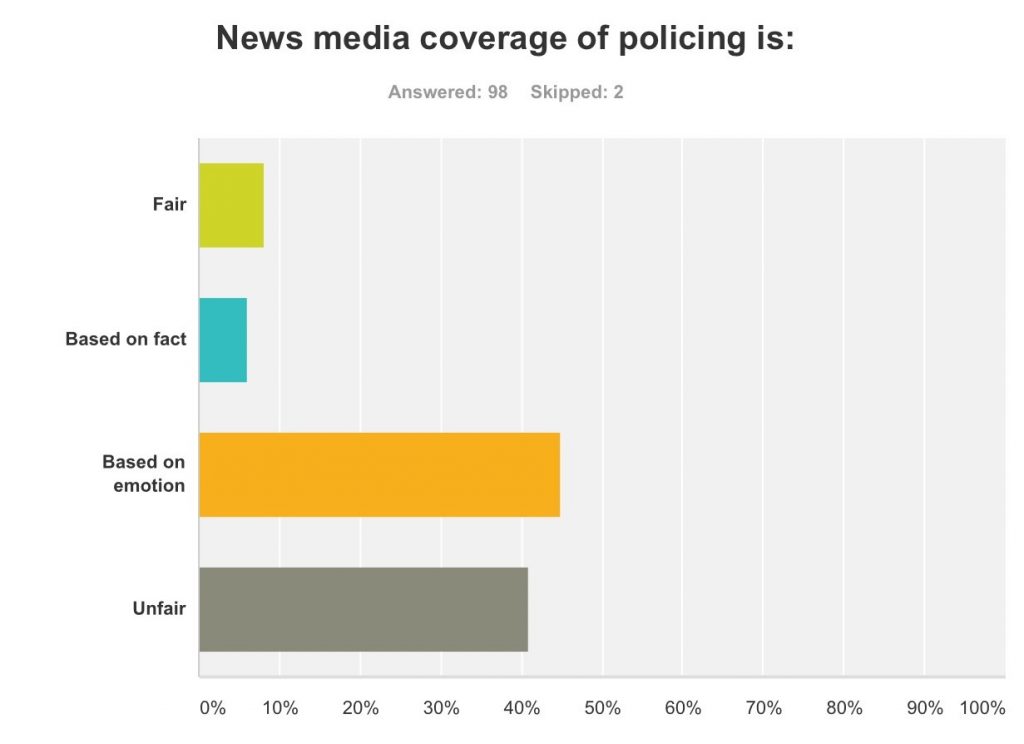 Nearly 87 percent of those surveyed indicated they trust their local police department. Only about 1 percent somewhat disagreed with the statement that they trust their police department, and just over 12 percent somewhat agreed with the statement that they trust their local police department. This local data supports a recent Gallup poll indicating support for law enforcement in the United States has risen.7
Nearly 87 percent of those surveyed indicated they trust their local police department. Only about 1 percent somewhat disagreed with the statement that they trust their police department, and just over 12 percent somewhat agreed with the statement that they trust their local police department. This local data supports a recent Gallup poll indicating support for law enforcement in the United States has risen.7
Belton’s Approach to Crime Prevention
For the past three years in a row, crime in Belton, Texas, has decreased despite the rapid growth of the city and surrounding region. Community trust of the police department is also at an all-time high. In 2009, Belton embarked on an aggressive campaign of restoring community trust and professionalizing the department using community policing and problem-oriented policing principles as framework for a modern model of policing based on 19th century policing principles. The Belton Police Department (BPD) operates under a geographic responsibility–based philosophy of community policing, which is referred to as “prevention-focused policing.” Under this system, each patrol officer is assigned to a geographic area of the city, known as “sectors.” The officers are responsible for their sectors, in addition to response to calls for police service for a larger patrol district. Each officer is held accountable for activities, nuisances, problems, and crime prevention programs in his or her sector. Officers are responsible for solving problems by building partnerships with community members who live or work in their sectors. Officers are empowered to think “outside the box” to solve problems that effect quality-of-life issues in their sectors, which requires not just problem-solving, but also problem-finding. This includes addressing broken windows theory issues and other underlying factors that contribute to crime or impact quality of life.8
Additionally, they act as a liaison between the residents in their sector and governmental services. Officers are responsible for the following in their sectors:
• Tracking criminal activity
• Analyzing crime trends
• Developing and implementing action plans to help address community issues and criminal activity
• Acting as a liaison between the police department and residents, businesses, and community groups
• Identifying nuisance and aesthetic issues and work with other city officials to correct them
• Coordinating with Criminal Investigation Division personnel to solve crimes in the sector and apprehend offenders
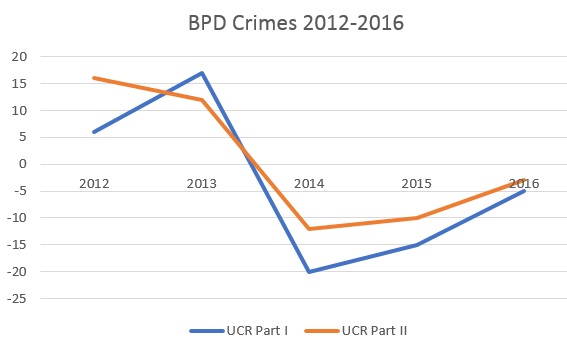
The objectives and priorities developed while researching how to implement a prevention-focused model of policing included a value-based approach whereby officers were asked to achieve tasks supporting the model rather than simply performing “random” patrol tasks. A preventative approach, rather than a responsive approach to policing, was identified as an objective. A conversion was made from a traditional, order maintenance model to a comprehensive community service model. Adopting best practices and using multiple methods of interaction and partnering with the community became priorities.
The model included the following four components: (1) operations; (2) community partnerships; (3) programs and projects; and (4) education awareness.
Operations deals with sector responsibility: traffic enforcement using a policing-with-a-purpose philosophy, patrol, and the use of unmanned marked vehicles for deterrence. BPD calls the unmanned marked vehicles “Ghost Squads,” which are placed in front of businesses like Walmart to deter shoplifters and on roadways to deter unsafe driving. This program has been one of the most visible and successful prevention tools BPD has deployed.
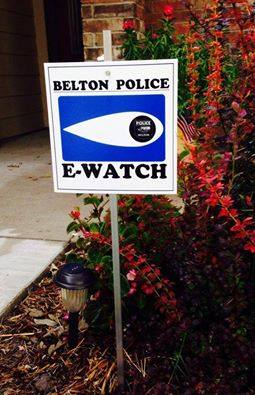
Community partnerships involves programs like the virtual neighborhood watch program (E-Watch) and numerous outreach programs—Citizens Police Academy, National Night Out, Coffee with a Cop, Youth Police Academy, Explorer Program, Vacation Watch, and RU-OK? (a senior citizen welfare check program).
Programs and projects involve initiatives such as a neighborhood video partnership, the Hide-Lock-Take vehicle burglary prevention program, school resource officers, and a partnership with local clergy members (Belton Clergy-Police Partnership).
Sharing the philosophy behind the prevention focused policing model with all staff so they understand and embrace the approach is part of the education awareness component of the model. BPD also uses social media, the news media, newsletters, information booths at community events, and the city’s website to make the public aware of crime prevention tips.
Elimination of counter-productive behavior, such as multiple officer response to calls that needed only a single officer has been a major focus. By doing this, BPD has increased officers’ uncommitted patrol time to allow for more proactive community engagement. Problem-finding rather than just problem-solving is coached and required of all staff—rather than waiting for a problem to occur, forecast it and address the underlying issues so the problem can be prevented. The measurable goals for the implementation of this model are reduced traffic accidents; the number of E-Watch partners; reduced crime rate; growth of 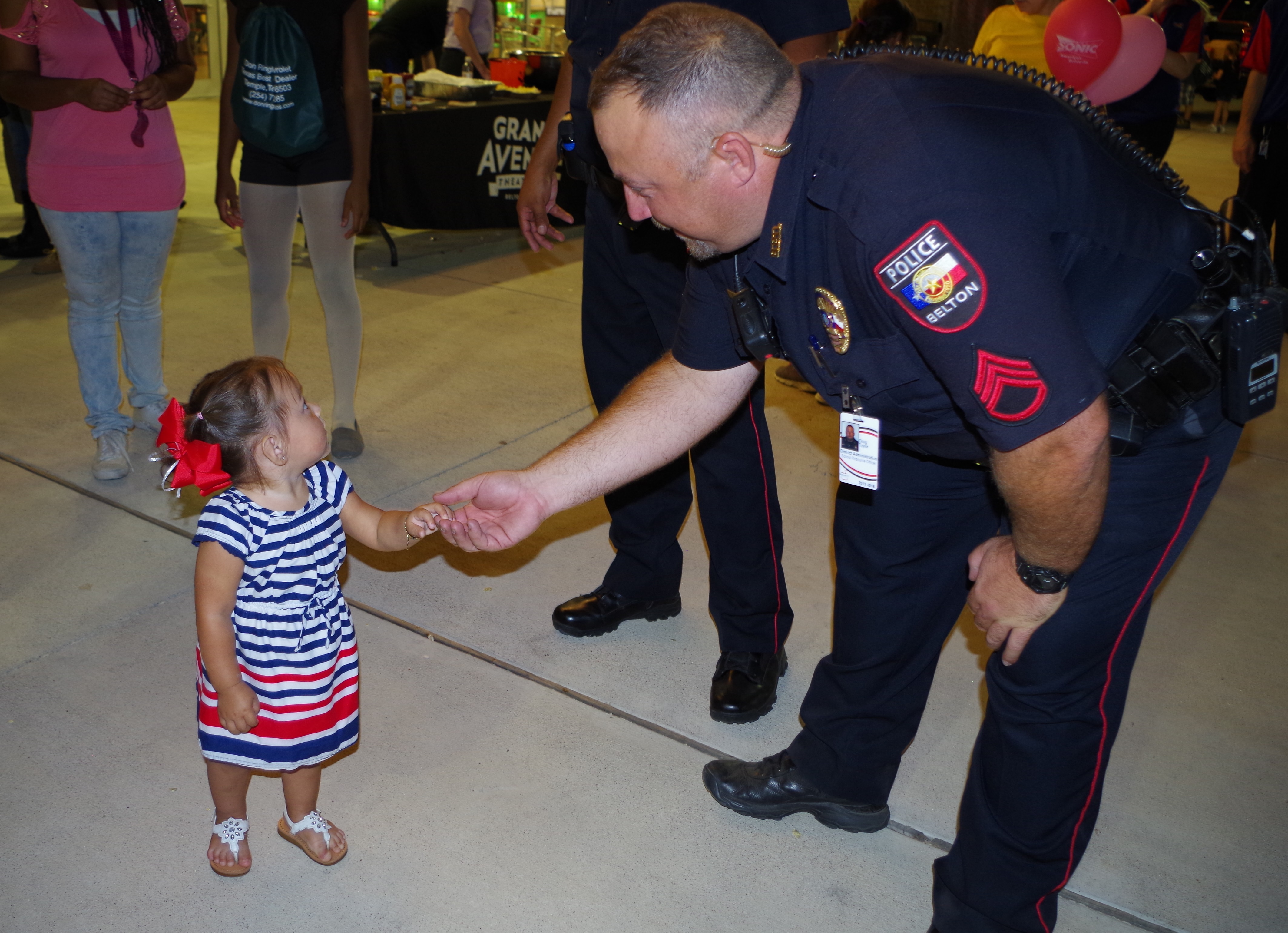 community outreach programs; identification of known offenders; apprehension of wanted persons; and use of resources and equipment to deter crime. As a result of efforts thus far, the number of community partners and participation in community outreach efforts have multiplied, while the crime rate has dropped over the past three years, demonstrating early success of BPD’s approach.
community outreach programs; identification of known offenders; apprehension of wanted persons; and use of resources and equipment to deter crime. As a result of efforts thus far, the number of community partners and participation in community outreach efforts have multiplied, while the crime rate has dropped over the past three years, demonstrating early success of BPD’s approach.
The internal language eight years ago for BPD was not always professional. This deficiency was confronted, and the BPD’s language is now professional with a customer service mind-set and a prevention-focused attitude. Other police departments have employed the BPD’s prevention-focused policing model, and BPD commonly gets visited by other departments in Texas that are seeking a more effective way to police.
Belton Clergy-Police Partnership
In 2015, a partnership between the BPD and the churches in Belton was established. This became known as the Belton Clergy-Police Partnership. Ministers from churches representing all groups in the community attend a series of training events to gain a better understanding of policing. The goals of this initiative are to encourage prayer for officers, create open communication between the ministers and the chief of police, provide calm during crisis events, and increase community involvement. The chief uses this partnership to provide information to clergy team members that they can then relay to their congregations. Likewise, clergy team members are able to bring community concerns and issues to the chief’s attention.
In April 2017, this partnership was tested when a clergy team member brought concerns from African American community members surrounding an arrest. Allegations of racism were made by family members of the arrested individual. The clergy team member was shown the video of the traffic stop, which clearly showed a professional encounter by the police officers, and he was then able to relay accurate information to the family and others who were concerned. The video could not be released publicly due to pending court proceedings, but the clergy team member was able to view it under this partnership.
Implementing a Prevention-Focused Philosophy
Initially, not all officers bought in to the new philosophy, and some chose to move on because they did not believe it was “real policing.” However, the Belton model is rooted in the foundation principles of policing. Customer service is emphasized and de-escalation techniques are taught. Most officers embraced these changes. They enjoy the job satisfaction and rewards of making a difference and getting to know the people they serve. By 2014, the prevention-focused philosophy began catching on as a three-year crime rate reduction began. Even skeptical officers began to embrace the new approach when they realized that it was easier to address a crime-conducive condition than to take a report in reaction to a crime.
BPD’s strategic plan identifies the department’s guiding principles as prevention, safety, partnerships, team development, and quality of life. It was determined (and later taught to all staff) that everything done must fit into one of the guiding principles. Staff was told if they are doing something that did not fit into the guiding principles that it was considered counterproductive behavior. The outcome statements for the strategic plan are as follows:
• BPD is prevention-focused through proactive community policing.
• BPD is dedicated to keeping our community and roadways safe.
• BPD maintains strong relationships with our stakeholders built on trust and transparency.
• BPD values all members of our team.
• BPD is committed to creating an environment whereby our community can enjoy an excellent quality of life.
Conclusion
A law enforcement agency that adopts a prevention-focused policing model of community policing will be more successful in building public trust. This requires making prevention the focus of all police operations. Assigning police officers areas of responsibility will make them feel a sense of ownership of the area. Officers need to have defined specific responsibilities backed up by an accountability system with measurable outcomes and performance expectations—they should understand they are stakeholders in their sectors and be required to create partnerships with residents and businesses to seek their assistance in preventing crime. A mind-set that repeat calls for the same problem at the same location is unacceptable and using problem-solving techniques to prevent future occurrences are essential. Counterproductive activities that do not fit the agency’s mission, do not align with a customer service mind-set, or are not prevention focused should not be tolerated.
Prevention should involve the elimination of crime-conducive conditions. This includes identifying opportunities criminals will exploit and educating the community on how to eliminate these opportunities. Programs that support prevention goals will help deliver wanted outcomes (e.g., Hide-Lock-Take, Coffee with a Cop, E-Watch, National Night Out). Emphasis on aesthetic concerns in sectors will improve neighborhood vitality and reduce breeding grounds for criminal behavior. Uncommitted patrol time should be focused on prevention and safety rather than undirected random patrol. High visibility and quick response to emergencies can still be achieved while performing proactive community service activities.
These steps to building public trust in policing using a prevention-focused policing model will work if embraced as an organizational philosophy. Making prevention the focus of all police operations, fostering a servant-guardian mentality in officers, making quality of life the end game, embracing technology, developing staff, adopting “best practices,” and embracing an officer-safety training program will take a law enforcement agency from good to great.
Notes:
1 Michael Nagle, “Sir Robert Peel’s Nine Principles of Policing,” New York Times, April 15, 2014.
2 Dave Grossman, “On Sheep, Wolves, and Sheepdogs,” excerpted from On Combat: The Psychology and Physiology of Deadly Conflict in War and in Peace (WSG Research Publications, 2004).
3 Bureau of Justice Statistics, “Report: From 2002-11 Blacks Were 2.5 Times More Likely Than Whites to Experience Nonfatal Force by Police,” news release, November 14, 2015.
4 Justin McCarthy, “Americans’ Respect for Police Surges,” Gallup, October 24, 2016.
5 Emily Gold and Melissa Bradley, “The Case for Procedural Justice: Fairness as a Crime Prevention Tool,” Community Policing Dispatch (September 2013).
6 Texas Police Chiefs Association “Recognition Program.”
7 Justin McCarthy, “Americans’ Respect for Police Surges,” Gallup, October 24, 2016.
8 George L. Kelling and James Q. Wilson, “Broken Windows: The Police and Neighborhood Safety,” The Atlantic (March 1982).


